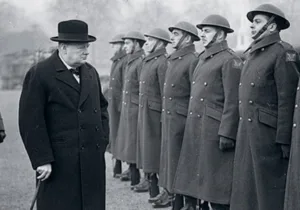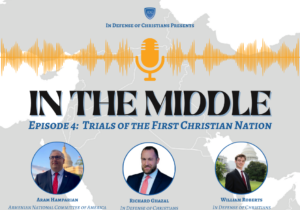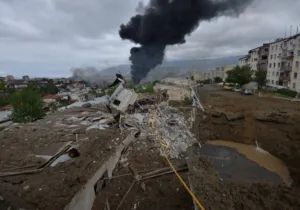The latest conflict between Armenia and Azerbaijan has been raging since late September. This conflict takes place in and around Nagorno-Karabakh (or Artsakh), a region in Azerbaijan whose population is mostly Armenian by ethnicity. A lot of factors play a role in this tragic conflict that has inflicted pain on both sides. This article will primarily focus on international law—more precisely, the adopted resolutions 822, 853, 874, and 884 of the UN Security Council.
These 1993 resolutions, which form the fundamental legally binding basis for a political solution of Nagorno-Karabakh, elicit conflicting interpretations. Azerbaijanis tend to highlight phrases that affirm territorial integrity without recognizing the need for a political solution of Nagorno-Karabakh. Armenians tend to use the resolutions to deny that the Republic of Armenia’s military was involved. But both interpretations are incorrect.
What, then, do these resolutions mean? And maybe more importantly, what do they not mean?
First of all, distinguishing between preambulatory and operative clauses is very important. Preambulatory clauses state facts, while operative clauses signify actions to be taken or recommendations. So, when resolution 853 of the UNSC states, “The Security Council, reaffirming the sovereignty and territorial integrity of the Azerbaijani Republic and of all other States in the region,” it means that the sovereignty and territorial integrity of the Azerbaijani Republic and of all other states in the region are important and should not be infringed upon. It does not say that Armenia has infringed upon Azerbaijani’s territorial integrity.
Another often misinterpreted clause is in resolution 822: “The Security Council demands the immediate cessation of all hostilities and hostile acts with a view to establishing a durable cease-fire, as well as immediate withdrawal of all occupying forces from the Kelbadjar district and other recently occupied areas of Azerbaijan.” Important here is the “all occupying forces.” Who are they? To answer that question, one must first look in the resolution itself. In the preambulatory clauses of the resolution, the Security Council does specify whom it regards as parties to the conflict: “The Security Council noting with alarm the escalation in armed hostilities and, in particular, the latest invasion of the Kelbadjar district of the Republic of Azerbaijan by local Armenian forces.” The key phrase here is “local Armenian forces”. It does not say Armenians or the Republic of Armenia. In this regard, the Security Council considers the conflict as one between Azerbaijan and local Armenian forces from Nagorno-Karabakh.
This is crucial in understanding the resolutions! The Security Council does not explicitly deny the involvement of the Republic of Armenia, but it puts the responsibility with the Armenians from Nagorno-Karabakh. Since these resolutions reaffirm each other and do not change the meaning of the “forces,” every time one of the resolutions demands withdrawal of the occupying forces from a district, this concerns the Nagorno-Karabakh Armenians.
So, the aforementioned preambulatory phrase of resolution 853 becomes a warning to, rather than a condemnation of, Armenia. There are times when a resolution, for example, “urges the Government of the Republic of Armenia to continue to exert its influence to achieve compliance by the Armenians of the Nagorny-Karabakh region of the Azerbaijani Republic with its resolution 822 (1993) and the present resolution” (UNSC resolution 853). But the resolution does not define this influence, which certainly does not equate to “boots on the ground.”
Isn’t all this unfair to the Azerbaijanis? Weren’t there plenty of Armenian military forces during the war from 1988–94? The resolutions assume the Armenian military was not involved because, according to international law, it shouldn’t have been. However, we know that Armenians were involved. Ultimately, to create a political solution regarding Nagorno-Karabakh, it is more convenient to consider the war as an internal conflict instead of an interstate conflict.
Taken together, these resolutions are quite nuanced. They demand the return of all non-Nagorno-Karabakh districts to the Republic of Azerbaijan; they belong to neither Armenia nor Nagorno-Karabakh. As for Nagorno-Karabakh, the Security Council does not specify a solution. The Minsk Group—which Russia, France, and the United States preside over and includes Armenia and Azerbaijan—is supposed to reach that solution.
From an international law perspective, the wording of the resolutions is therefore quite ingenious. It prevents anyone from having to choose one side over the other, and it forces Armenia and Azerbaijan to find a political solution for Nagorno-Karabakh instead of a military one.
What should the political solution be? That is up to the parties involved, but a helpful foundation could be the so-called Madrid Principles, which Armenians and Azerbaijanis support. The 2009 agreement focuses on self-determination for Nagorno-Karabakh and a return of non-Nagorno-Karabakh territories to Azerbaijani control.
However, as my former article argues, a solution is not in Russia’s interests. Both countries depend on Russia, and by keeping the conflict unresolved, Russia maintains the status quo. A solution to the conflict, therefore, is not to be expected soon.





